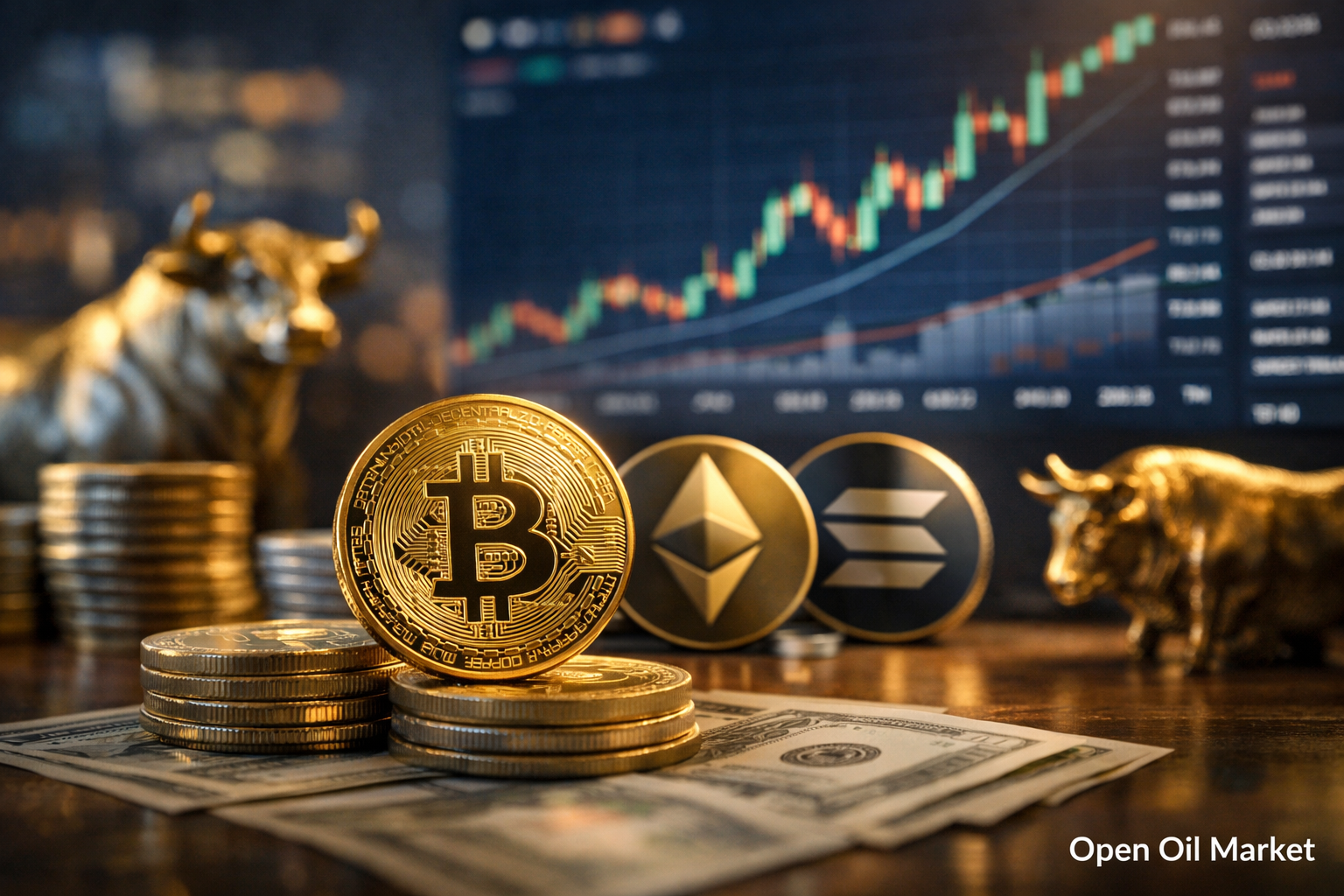
Global Startup and Venture Capital News as of October 20, 2025: The Return of Mega Funds, Record AI Rounds, Revitalization of IPOs, and Trends in the Global Venture Market.
By mid-October 2025, the global venture market is steadily recovering after an extended downturn in recent years. Investors worldwide are once again actively funding technology startups—record deals are being made, and plans for companies to go public (IPOs) are back in focus. Major players are returning to the arena with large-scale investments, and governments across various countries are intensifying their support for innovation. As a result, private equity is gradually returning to the startup ecosystem, providing resources for new growth.
Growth in venture activity is observed across all regions. The US remains firmly at the forefront (especially in artificial intelligence), investment volumes in startups are rapidly increasing in the Middle East, and Germany has surpassed the UK in the volume of venture deals for the first time. India, Southeast Asia, and the Gulf countries are attracting record amounts of capital against a backdrop of decreased activity in China. The startup ecosystems of Russia and the CIS are also striving to keep pace, despite external constraints. Thus, a global venture boom is gaining momentum, even though investors continue to act selectively and cautiously.
Below are the key events and trends shaping the agenda of the venture market as of October 20, 2025:
- The Return of Mega Funds and Major Investors. Leading venture funds are raising unprecedented amounts of capital and sharply increasing investments, saturating the market with liquidity and igniting risk appetite.
- Record Rounds in AI and a New Wave of Unicorns. Unprecedented funding rounds are driving startup valuations to unseen heights, especially in the AI segment, resulting in the emergence of new unicorns.
- Revitalization of the IPO Market. Successful public offerings of several technology companies and new applications confirm that the long-awaited "window" for exits remains open.
- Diversification of Sector Focus. Venture investments are directed not only toward AI but also into fintech, climate and environmental projects, biotechnology, defense developments, and even crypto startups.
- A Wave of Consolidation and M&A Deals. New large mergers, acquisitions, and strategic investments are reshaping the industry landscape, creating opportunities for exits and accelerated growth.
- Local Focus: Russia and the CIS. Despite constraints, new funds and initiatives are being launched in the region to develop local startup ecosystems and attract investor attention.
The Return of Mega Funds: Big Money is Back on the Market
The largest investment players are making a triumphant return to the venture scene, signaling a renewed appetite for risk. For instance, the American firm Andreessen Horowitz has announced the formation of a mega fund worth approximately $20 billion for investments in AI startups, while the Japanese conglomerate SoftBank is launching Vision Fund III, with around $40 billion aimed at advanced technologies (including artificial intelligence and robotics). Sovereign funds from Gulf countries have also sharply increased their activity, pouring billions of dollars into tech projects and developing state mega-programs, thus creating their own tech hubs in the Middle East. Simultaneously, numerous new venture funds are being established globally, attracting significant institutional capital for investments in high-tech sectors.
Esteemed firms from Silicon Valley are also expanding their presence. In the American venture sector, funds have accumulated unprecedented reserves of uninvested capital ("dry powder")—hundreds of billions of dollars, ready to be deployed as confidence in the market returns. The influx of "big money" is filling the startup market with liquidity, providing resources for new funding rounds and supporting the growth of promising companies' valuations. The return of mega funds and major institutional investors not only intensifies competition for the best deals but also instills confidence in the industry regarding continued capital inflows.
Record Investments in AI and a New Wave of Unicorns
The artificial intelligence sector is the main engine of the current venture upturn, demonstrating record funding volumes. Investors worldwide are eager to invest in AI startups, leading to unprecedented mega-rounds. In just the last quarter, the company Anthropic has raised approximately $13 billion, Elon Musk's project xAI has gathered over $5 billion, and AI model developer OpenAI has organized a funding round amounting to $40 billion (valuing the company at around $300 billion)—such scales have never previously been witnessed in the industry. Consequently, nearly half of all venture capital in 2025 is concentrated in the AI sector.
The high influx of capital is inflating valuations of young companies: AI startups often reach "unicorn" status (valued at over $1 billion) in record time. A new wave of highly valued companies has emerged in the market, especially in the domain of generative AI and AI infrastructure. While some major investors are already cautioning about signs of a "hype bubble" at early stages (where any project with an AI label is assigned excessive multiples), the fear of missing the next revolution fuels further capital influx. As a result, the AI sector is experiencing an unprecedented boom and forming generations of new tech leaders—provided they can validate their business models with concrete results.
The IPO Market is Reviving: A Window of Opportunities for Exits
The global market for public offerings of startups is emerging from its quiet period and gaining traction. In recent months, several notable venture companies have successfully conducted IPOs, achieving high stock valuations. Investors are once again willing to buy shares of tech newcomers, evidenced by impressive debuts: for instance, design developer Figma and fintech giant Circle entered the market with tremendous success, their stocks soaring hundreds of percent in the initial trading days. In 2025, the total number of IPOs has increased compared to the previous year, and in the third quarter, more than a dozen unicorn startups publicly listed, with a combined market capitalization exceeding $90 billion at the time of their debut.
Venture investors view these signals as confirmation that the long-awaited "liquidity window" for exits is indeed open. Companies that postponed their plans to go public during the market downturn are now resuming IPO applications to regulatory bodies. Among the anticipated major IPOs is Swedish fintech decacorn Klarna, preparing to list with an estimated valuation of around $14 billion, along with several other unicorns worldwide. The successes of these new listings not only allow founders and investors to realize profits but also restore confidence that the venture cycle can culminate in planned exits. The window of opportunities for investment exits has swung open once again, enabling the redistribution of capital into new projects.
Diversification of Investments: It's Not Just About AI
In 2025, venture investments are expanding to cover a broader range of sectors and are no longer concentrated solely on artificial intelligence. Following last year's downturn, funding in other segments of the tech market is reviving, making the current growth more balanced. Funds are striving to diversify their portfolios, allocating resources to promising projects across various fields. Key areas attracting investor attention include:
- Fintech — new financial technology services and digital banks continue to attract capital amid demand for online services.
- Climate and Environmental Projects — solutions in clean energy, carbon footprint reduction, and sustainable technologies are gaining support thanks to the priority of sustainable development (ESG).
- Biotechnology — investments in medicine and pharmaceuticals remain substantial, particularly in drug development, genetic research, and longevity technologies.
- Defense and Aerospace Developments — startups in security, military technology, and space are drawing attention amid increased government contracts and geopolitical challenges.
- Crypto Startups — following a decline in interest in previous years, projects in cryptocurrency and blockchain are once again on the radar of venture investors, partly due to the stabilization of the digital asset market.
Thus, venture capital is flowing into diverse sectors—from finance and health to climate and defense technologies. The strategy of expanding sector focus aims to reduce the risks of overheating in one segment (particularly AI) and ensure a more sustainable development of the entire startup market.
Consolidation and M&A Deals: Scaling Up Players
High startup valuations and intense market competition are driving the industry towards consolidation. A wave of large mergers and acquisitions is once again taking center stage, reshaping the balance of power in the tech sector. In the third quarter of 2025, numerous notable M&A deals occurred, including several unicorns acquired by strategic investors. Both corporations seeking to acquire promising developments and tech unicorns uniting to strengthen their positions are at play. For example, one of the AI market leaders—OpenAI—not only secures record funding but also acquires smaller AI companies to expand its capabilities; in the fintech segment, major players are acquiring startups to integrate new services, while in biotech, pharmaceutical giants are actively acquiring developers of promising medications.
Consolidation is reshaping the industry landscape, scaling up key players and allowing the most successful startups to scale swiftly under the wings of large companies. For venture funds, the M&A wave signifies additional exit pathways: strategic deals often serve as an alternative to IPOs, delivering long-awaited profits to investors. While the total volume of buyout deals may vary quarterly, the trend towards business consolidation is evident—the tech sector has entered a phase where collaboration and acquisitions are integral to growth strategies.
Russia and the CIS: Local Initiatives Amid Global Trends
In Russia and the CIS, despite external constraints, venture activity is also reviving. According to industry research, in the first half of 2025, the volume of venture investments in Russia nearly doubled compared to the previous year (albeit from a low base), reaching tens of millions of dollars. At the same time, the total number of deals has decreased, indicating a new trend: there is more money, but fewer projects, meaning investors are betting only on the strongest teams. The average investment size has increased, and the requirements for startups have tightened—getting selected has become more difficult, but trusted projects are attracting significantly larger capital.
New funds and programs aimed at supporting technology companies are being launched in the region. Government institutions and large corporations are increasingly participating in the development of the local startup scene: industry accelerators, regional venture funds (such as the Moscow AI development fund, industry funds at state corporations), and innovation clusters are being created. These initiatives aim to offset the outflow of foreign capital and integrate local projects into global trends. Despite sanction-related constraints, Russian and neighboring ecosystems are striving to follow global trends—from artificial intelligence to new industrial technologies. The local venture market is showing cautious growth and gradually restoring investor trust, ready to finance competitive startups within the country.
Cautious Optimism and Quality Growth
By mid-autumn 2025, the venture market displays moderately optimistic sentiments: successful IPOs and large deals indicate that the downturn period is behind us, although investors continue to act selectively and prefer projects with sustainable business models. Large capital inflows into AI and other sectors instill confidence, but funds are striving to diversify investments and tighten risk controls to ensure that the new upturn doesn’t lead to overheating. Ultimately, the industry is entering a new phase of development focused on quality, balanced growth. Market participants are cautiously optimistic: there is an understanding that the next wave of innovations could yield significant achievements if a reasonable balance is maintained between ambitious investments and disciplined risk evaluation.




